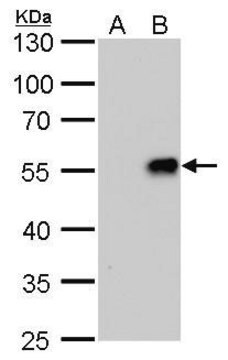推薦產品
生物源
mouse
品質等級
抗體表格
ascites fluid
抗體產品種類
primary antibodies
無性繁殖
9B3.2, monoclonal
物種活性
human
製造商/商標名
Chemicon®
技術
immunofluorescence: suitable
同型
IgG2a
運輸包裝
wet ice
特異性
Influenza A H1N1 antigen.
• Reacts strongly with all H1N1 strains tested including Beijing, A/ Texas /36/91, A/Berkeley/1/98, A/HongKong/503/97, A/Nanchang /16A/98,A/PR/8/34, New Caledonia strain, and A/California/7/2009.
• No reactivity shown to Influenza B strains.
• Reacts strongly with all H1N1 strains tested including Beijing, A/ Texas /36/91, A/Berkeley/1/98, A/HongKong/503/97, A/Nanchang /16A/98,A/PR/8/34, New Caledonia strain, and A/California/7/2009.
• No reactivity shown to Influenza B strains.
免疫原
Epitope: H1N1 Antigen
Influenza blend
應用
Anti-Influenza A Antibody, H1N1 Antigen, clone 9B3.2 is an antibody against Influenza A for use in IF.
Indirect Immunofluorescence : 1/32
Research Category
Infectious Diseases
Infectious Diseases
Research Sub Category
Infectious Diseases - Viral
Infectious Diseases - Viral
外觀
Ascites
儲存和穩定性
Maintain at -20°C. Avoid repeated freeze/thaw cycles.
法律資訊
CHEMICON is a registered trademark of Merck KGaA, Darmstadt, Germany
免責聲明
Unless otherwise stated in our catalog or other company documentation accompanying the product(s), our products are intended for research use only and are not to be used for any other purpose, which includes but is not limited to, unauthorized commercial uses, in vitro diagnostic uses, ex vivo or in vivo therapeutic uses or any type of consumption or application to humans or animals.
未找到適合的產品?
試用我們的產品選擇工具.
儲存類別代碼
10 - Combustible liquids
水污染物質分類(WGK)
nwg
閃點(°F)
Not applicable
閃點(°C)
Not applicable
分析證明 (COA)
輸入產品批次/批號來搜索 分析證明 (COA)。在產品’s標籤上找到批次和批號,寫有 ‘Lot’或‘Batch’.。
Asami Makino et al.
FASEB journal : official publication of the Federation of American Societies for Experimental Biology, 31(4), 1301-1322 (2016-08-06)
We identified a novel, nontoxic mushroom protein that specifically binds to a complex of sphingomyelin (SM), a major sphingolipid in mammalian cells, and cholesterol (Chol). The purified protein, termed nakanori, labeled cell surface domains in an SM- and Chol-dependent manner
Brian J Morrison et al.
Journal of virological methods, 248, 7-18 (2017-06-19)
This study describes an antibody-dependent NK cell degranulation assay, as a biomarker to assess antibody-dependent cellular cytotoxicity (ADCC) response in influenza plasma and for antibody therapies against influenza infection. The concentration of neutralizing antibodies (NAbs) against the hemagglutinin receptor of
Sreekumar Othumpangat et al.
Pathogens (Basel, Switzerland), 12(1) (2023-01-22)
Understanding the host response to influenza A virus (IAV) infection is vital for developing intervention strategies. The primary barriers for invading respiratory pathogens are the respiratory tract epithelial cells and antimicrobial proteins generated by these cells. The antimicrobial peptide, β-defensin-1
Rapid typing, subtyping and RNA quantification of influenza virus type A strains in respiratory secretions.
Elena Percivalle,Francesca Rovida,Antonio Piralla,Vanina Rognoni,Maurizio Zavattoni et al.
The New Microbiologica null
Amani Audi et al.
Frontiers in microbiology, 11, 612-612 (2020-05-20)
Influenza A virus (IAV) is a major human respiratory pathogen causing annual epidemics as well as periodic pandemics. A complete understanding of the virus pathogenesis and host factors involved in the viral lifecycle is crucial for developing novel therapeutic approaches.
我們的科學家團隊在所有研究領域都有豐富的經驗,包括生命科學、材料科學、化學合成、色譜、分析等.
聯絡技術服務




